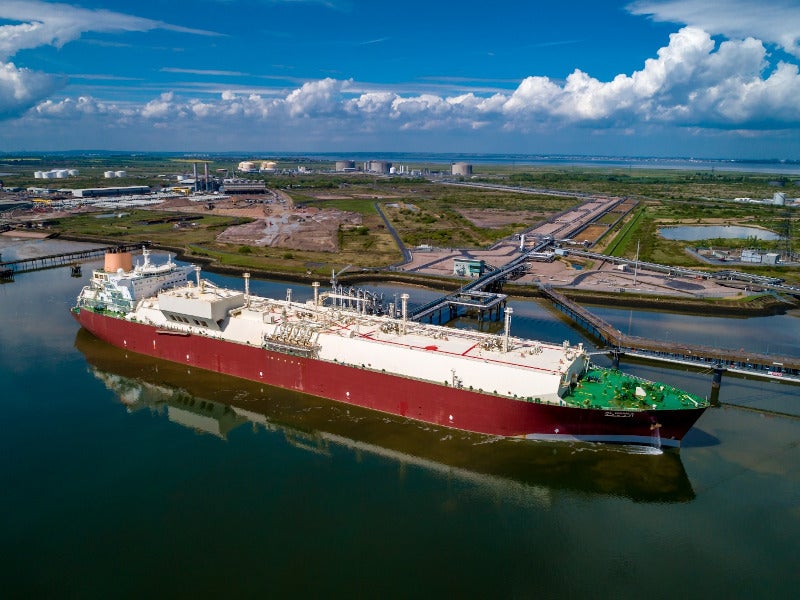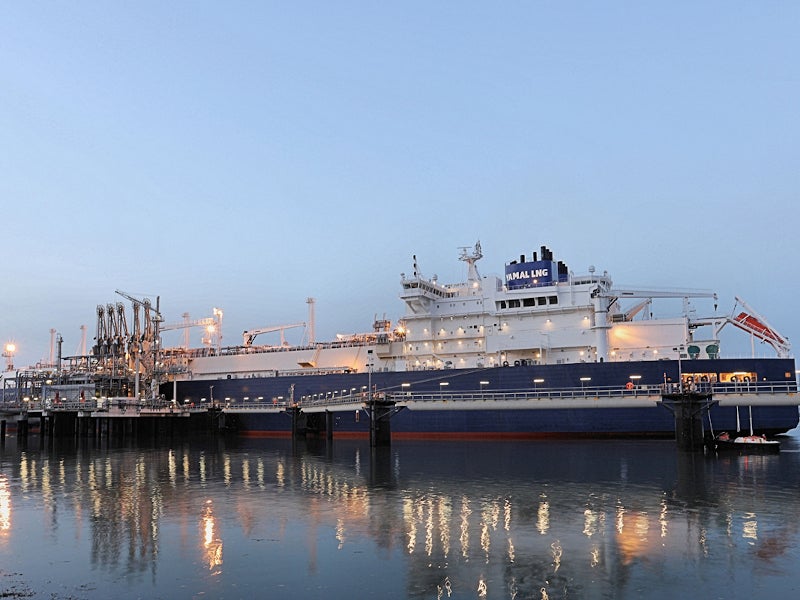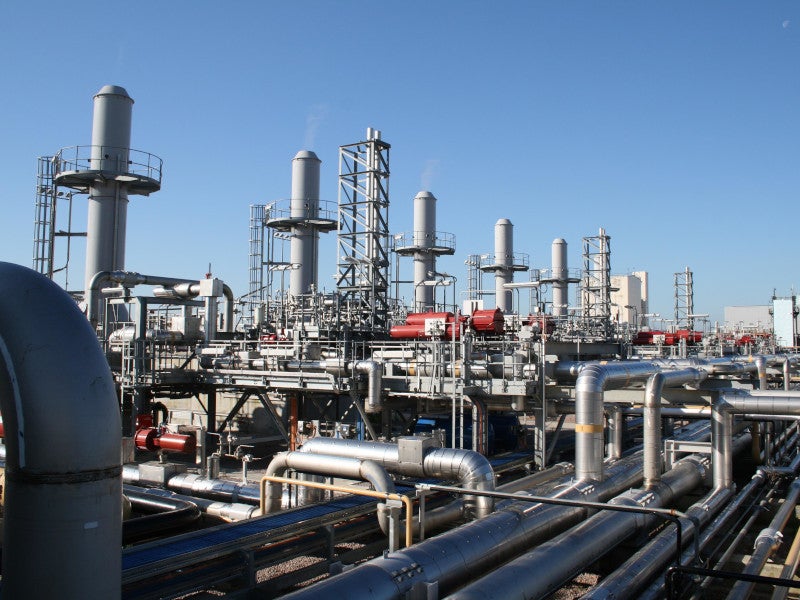The Grain LNG import terminal located on the Isle of Grain, UK is Europe’s biggest LNG import terminal with an LNG regasification capacity of 15 million tonnes per annum (Mtpa) and a storage capacity of one million cubic metres (mcm).
Owned and operated by Grain LNG, a subsidiary of National Grid, the facility meets up to one-fifth of the UK’s gas demand.
The Grain LNG import terminal was expanded in three phases that were commissioned in 2005, 2008, and 2010 respectively.
In phase four expansion, which is currently under consideration, the terminal’s storage capacity is expected to be increased to 1.2mcm by 2025.
The terminal’s entire primary capacity was booked until 2030 following an open bidding season carried out in two phases from November 2019 to October 2020.
Grain LNG received its 500th cargo shipment through LNG Merak from the Zeebrugge LNG export terminal in Belgium in March 2020.
Grain LNG import terminal development
The Grain LNG import terminal is located on a 600-acre site on the Isle of Grain in the Thames Estuary, Medway, Kent County, England.
The facility was originally built by British Gas as a peak-shaving LNG facility with four storage tanks of 50,000m3 capacity each in 1981. National Grid Grain LNG was established to develop and expand the facility in 2002.
The first phase development, which was carried out between 2002 and July 2005, involved the conversion of the pre-existing facility into an import facility with a capacity of 3.3Mtpa, modification of storage tanks, the construction of a jetty on the River Medway, and a 3.5km cryogenic pipeline. The jetty is capable of unloading Q-Flex LNG tankers of 70,000m3 to 217,000m3 cargo capacity.
Phase two expansion, commissioned in December 2008, involved the construction of three containment tanks of 190,000m3 capacity each, and new regasification facilities to increase the terminal’s import capacity by 6.5Mtpa.
In phase three, the terminal was expanded to accommodate a second jetty capable of unloading Q-Max LNG tankers of 125,000m3 to 266,000m3 capacity. Commissioned in December 2010, the phase three expansion also included the construction of an additional 190,000m3 storage tank and new regasification facilities to increase the terminal’s LNG receiving capacity by 5Mtpa.
The terminal’s first cool down service was performed on Wilgas LNG carrier in November 2014, while the first reload service was performed onto the Asia Vision LNG carrier in March 2015.
Facilities at the Grain LNG import terminal
The regasification equipment installed at the site includes submerged combustion vaporisers (SCVs) capable of re-gasifying 58mcm per day.
The blending facilities include a propane storage and injection facility, and two liquid nitrogen plants with four air separation units. Owned and operated by Air Products, the plants have a storage capacity of 5,000t of liquid nitrogen.
Truck loading facilities at the site include two loading bays comprising 36 slots a day with a maximum loading capacity of 80m3 per hour.
Auxiliary and support facilities at the terminal include an LNG break bulk marine facility, an on-site gas-fired combined heat power generation facility, and a floating storage facility.
Phase four expansion details
Estimated to cost more than £300m ($485m), the phase four expansion of the project will provide direct access to the largest EU market NBP with a 6Mtpa capacity increase, an additional 190,000m3 storage tank, and a second cryogenic unloading line.
The planning consents for the project have been received and the final investment decision is in place to proceed with the project.
LNG off-take
Grain LNG signed a 25-year agreement with Qatar Petroleum in October 2020 to provide storage and redelivery capacity at Grain LNG from mid-2025 onwards.
The initial capacity of 3.3Mtpa was sold to BP/Sonatrach under a 20-year agreement, while the second tranche of 6.5Mtpa was sold to Centrica, Gaz de France, and Sonatrach.
The customers for phase three capacity of 5Mtpa included BP, Iberdrola, Sonatrach, Centrica, E.ON, and GDF Suez.
Project financing
The phase one development of the Grain LNG import project incurred an investment of £150m ($260m), while phases two and three involved £390m ($778m) and £310m ($477m) of investments respectively.
The European Investment Bank (EIB) provided £120m ($214m) in funding for phase two and £160m ($317m) for phase three development.
Contractors involved
Skanska was awarded two contracts worth totaling £80m ($131m) by National Grid Transco (now National Grid) to convert the LNG storage terminal into an LNG import facility in April 2003.
The contractual scope included the design, construction, and installation of turnkey facilities such as a new jetty, and a 3.5km cryogenic pipeline to import LNG from specially adapted ships. It also included the modification of four existing LNG storage tanks.
As the planning consultant, Prima Uno reviewed and created tender programmes in addition to supporting the implementation of the NEC3 engineering and construction contract.
CB&I John Brown facilitated the construction of three new 190,000m3 of storage tanks and associated process plant during the phase three expansion project. CB&I was also awarded the lump-sum turnkey contract for phase two expansion of the terminal.
Balfour Beatty Civil Engineering was subcontracted by CB&I for the civil works package for the Grain LNG expansion.
Honeywell was awarded two contracts worth $2.8m to provide automation solutions for increasing the efficiency, production outputs, and performance for the terminal in December 2006.
One of the contracts was for the implementation of Honeywell’s Experion® process knowledge system (PKS), and two integrated safety systems at the Grain LNG import terminal.
Awarded via contracting engineer CB&I John Brown, the second contract included the delivery of integrated process control and safety system for the Grain LNG’s import terminal expansion.
National Grid partnered with E.ON for the supply of heat from the latter’s gas-fired power station to the LNG terminal via a heat pipe in November 2011.





